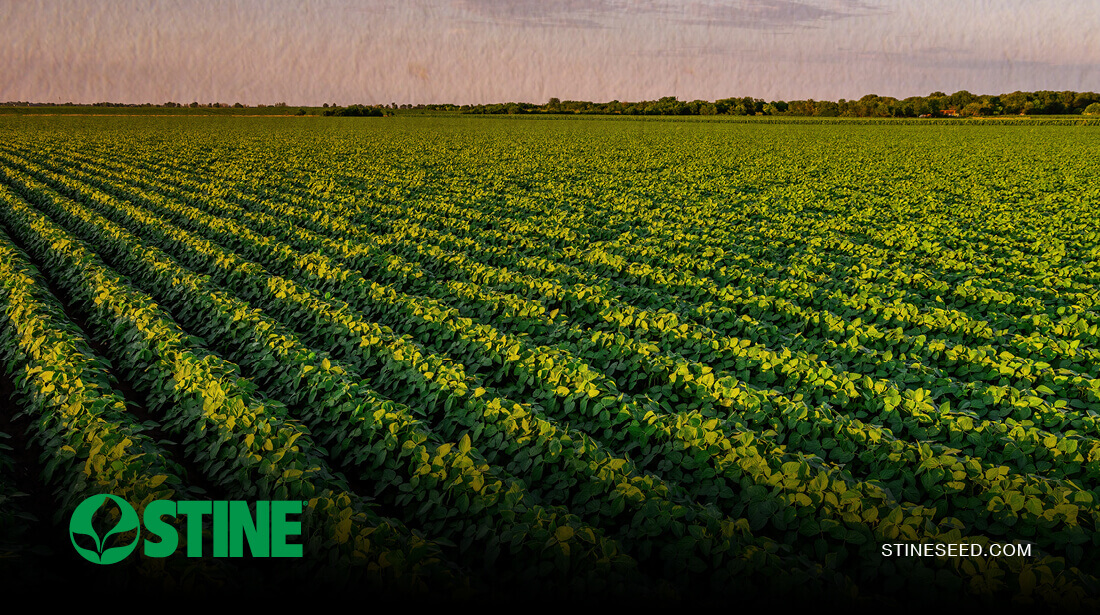Soybean growers in the Midwest face a new challenge with red crown rot (RCR), a stealthy and yield-threatening disease on the rise. Often mistaken for sudden death syndrome (SDS) or brown stem rot (BSR), RCR can go undetected until it’s too late. With the potential to significantly reduce yields, understanding its symptoms and implementing effective management strategies are crucial to safeguarding your fields this season.

Tyler DuBay, soybean technical agronomist for Stine® Seed Company, stresses the need for vigilance, especially as the disease spreads to new areas.
"We all need to stay connected to limit the severity and spread of RCR,” DuBay warns. “It’s becoming a big problem in areas of the Midwest like Indiana and Illinois. If growers fear RCR is present in their area or field, they should consult an agronomist immediately. By staying connected, we can crowdsource how to manage and control RCR effectively together.”
Key symptoms and causes
RCR is caused by the soilborne fungus Calonectria ilicicola. It has long been associated with peanuts in the South but has recently made its mark on soybeans in the Midwest. The disease thrives in warm, wet soils, infecting plants early in the growing season but showing symptoms later, usually in August or September. What makes RCR particularly tricky is its ability to masquerade as other diseases. While RCR shares similarities with SDS and BSR — such as yellowing between leaf veins and cryptic mid-season infection — it has distinct features:
- Brick-red fruiting bodies near the soil line at the base of the stem
- A collapsed or "melted" appearance in severe infections
- Thinner stands in heavily infected areas
Originally detected in Illinois, RCR has now been reported in neighboring states, including Iowa, Indiana, and Missouri, as well as in parts of Kentucky. Its spread remains puzzling, possibly connected to soil movement or unrecognized infections in surrounding states. Research from Michigan State University Extension has also linked RCR to contaminated equipment, wind, water and even wildlife, highlighting the importance of proper sanitation and preventative measures.
Stephanie Porter, outreach agronomist for the Illinois Soybean Association, notes that practices like bean-on-bean rotations or planting alfalfa may also lead to increased RCR presence. In severe cases, yield losses can approach 50%, so catching the disease early is critical.
Prevention and management
Currently, there are no fungicides specifically labeled for RCR, but several practices can reduce its impact:
- Crop rotation. Avoid planting soybeans consecutively in affected fields. Corn or nonlegume crops can disrupt the pathogen's life cycle.
- Cleaning equipment. Reduce the spread of RCR spores from field to field by cleaning equipment before leaving infected fields.
- Improved drainage. Addressing wet soil conditions through tiling or field grading can reduce disease severity.
- Seed selection. While no soybean varieties are fully resistant to RCR, choosing high-performing, disease-tolerant seeds can help.
“We recently launched a project to better understand RCR tolerance within genetics and the different agronomic practices that can be used to combat the disease,” says DuBay. “We also did the same for another environmental stressor, soybean gall midge. The more research we do, the better equipped we’ll be to help combat these issues as they continue to spread.”
DuBay also notes growers must plant their soybeans in the most desirable conditions possible. RCR infects the plant earlier in the growing season, so planting the crop in desirable soil conditions is essential to reducing infection potential.
“With proper protection and environmental conditions, growers can enable a strong crop to emerge and be successful without early season issues. Getting the bean started the right way is extremely beneficial.”
Tyler DuBay, Stine soybean technical agronomist
Scouting matters
Both DuBay and Porter emphasize the need for scouting fields during the reproductive growth stages when symptoms are most visible — which could be months in advance of planting. Historical field data and regular inspections, especially in late summer, can offer valuable insights before planting.
“Scouting fields during late summer and documenting the years’ prior to planting and reporting unusual symptoms can help identify RCR before it becomes widespread,” DuBay advises. Growers can lean on Stine’s trusted sales reps and agronomic experts to help identify and manage threats like RCR.”
For a deeper dive into managing RCR, listen to the Illinois Soybean Association’s Stephanie Porter on the “Stine Seedcast.” In this episode, Porter shares her insights on RCR, how it differs from SDS and strategies to mitigate its impact.
Related Articles
-

Use Stine’s XP® seed treatments to prevent early injury to your crops
December 2025 in Agronomy
-

Understanding Stine’s enhanced oil profile soybeans
December 2025 in Agronomy
-

Soil sampling sets the stage for spring
November 2025 in Agronomy
-

Corn production growth paves way for more high-performing Stine® hybrids
November 2025 in Agronomy



